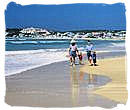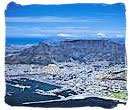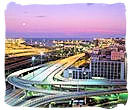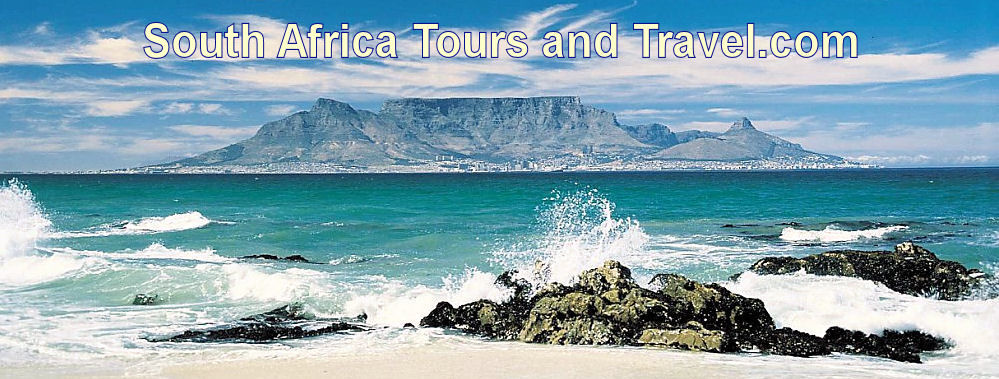 |
||
Brief summary of the colonial history of South AfricaThe colonial history of South Africa began with 9 employees of the VOC establishing themselves below the slopes of Table Mountain in 1657. It all started on 6 April 1652, when the Dutch seafarer Jan van Riebeeck arrived in Table Bay with his three ships.
His mission was to establish a supply station on behalf of the Dutch East India Company ( V.O.C.). Originally, the V.O.C. did not intend to establish a full-fledged colony at the Cape. However, the Company changed its mind when it gave nine of its servants their freedom in 1657 to establish private farms in the Rondebosch area below the eastern slopes of Table Mountain. After the French Revolution, the newly founded Republic of France conquered the Netherlands in 1795. The Netherlands became known as the Batavian Republic and the ruler of the Netherlands, Prince William of Orange, had to flee to England. Learn more about the colonial history of South Africa;
BRITISH OCCUPATION 1795 - 1803 RETURN TO DUTCH RULE 1803 - 1806 SECOND BRITISH OCCUPATION 1806 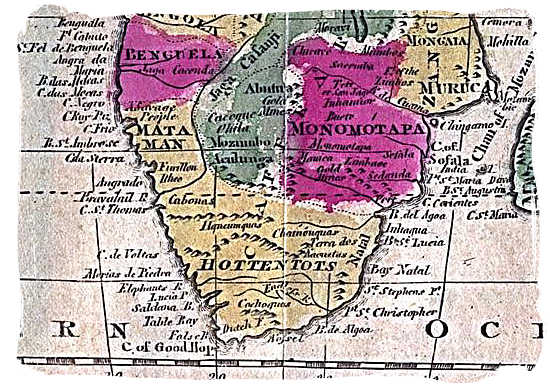 Part of a very old map of Africa, showing Southern Africa as it was when the first European explorers rounded the Cape of Good Hope Colonial History of South Africa British occupation 1795 - 1803,... In England, the prince asked the British to prevent France taking possession of the Dutch colonies. Britain obliged and, as a result, became involved with the Cape colony. Problems occurred almost immediately because not all the inhabitants of the Cape were in favour of British occupation. However, the British did bring with them certain improvements. Under British rule, officials received set salaries and were no longer dependent on incomes from fines. This eliminated most malpractices in the government. British iron ploughs were imported, which assisted with agricultural development. Because of the war in Europe, there was a growing demand for agricultural products from the Cape, which furthered economical growth. British taxation was also lenient. 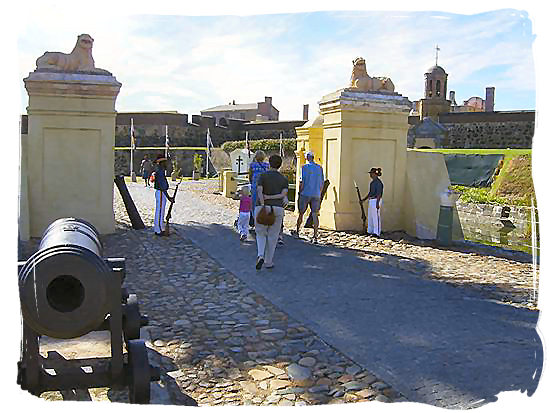 Main gateway into the castle of good Hope built between 1666 and 1679 by the Dutch East India Company, better known as the VOC (Vereenigde Oost-Indische Compagnie) Colonial History of South Africa - copyright © South-Africa-tours-and-travel.com The biggest problem the British had to contend with was the unrest on the eastern frontier. The farmers on the frontier were not prepared to submit to British rule without a fight and the African population also resisted. The farmers tried to recapture the Cape, but eventually surrendered. When Gaika became chief of the Xhosas, unrest and tension on the eastern frontier intensified. The farmers revolted under the leadership of Adriaan van Jaarsveld and relations between the farmers and authorities deteriorated. In 1803, after the Cape had been returned to the Dutch in terms of the Peace of Amiens (signed between England and France), British rule at the Cape came to an end. 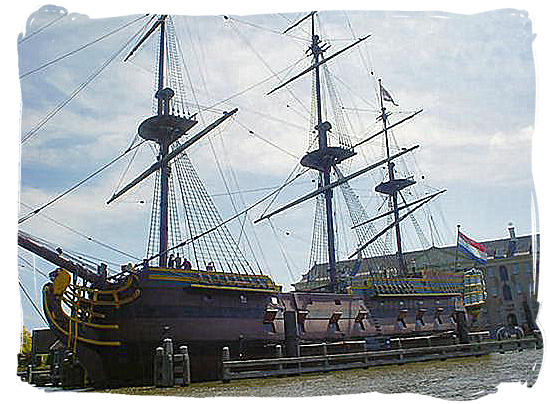 Replica of typical VOC ship, the Amsterdam, which waslost on its maiden voyage in 1749. The replica is on show at the Maritime Museum in the Netherlands Colonial History of South Africa << Top of Page Return to Dutch rule 1803 - 1806,… The Dutch Batavian Republic appointed Janssens as governor of the Cape and De Mist became Commissioner-General. These two leaders were supporters of the Dutch Patriots and they tried to re-establish Dutch settlement at the Cape. They also brought about some significant political and administrative changes. Janssens, as governor, held supreme legislative power and a political council assisted him in his duties. He also instituted a Council of Justice to represent the interests of the colonists. Municipal councils were instituted in Cape Town, Stellenbosch, Swellendam and Graaff-Reinet and every district had an appointed landdrost (magistrate). 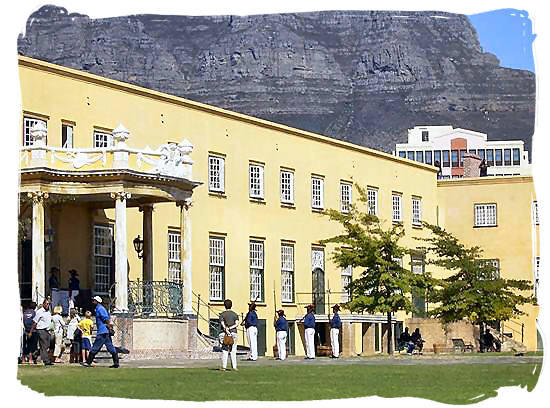 Main gateway into the castle of good Hope built between 1666 and 1679 by the Dutch East India Company, better known as the VOC (Vereenigde Oost-Indische Compagnie Colonial History of South Africa - copyright © South-Africa-tours-and-travel.com In 1804, De Mist published the Church Order that allowed for freedom of religion. Education was improved by importing teachers from the Netherlands. Sheep farming was also improved by importing merino rams from Spain. Wine experts from Germany were imported to try and improve the quality of wine. Unfortunately, some of De Mist’s plans for the frontier failed. The alliance between the Khoi people and the Xhosa on the frontier caused more friction and De Mist did not have sufficient funds to effectively carry out his frontier policy. When the Dutch flag was lowered for the last time on 10 January 1806, the Cape Colonists were sad to see De Mist and Janssens leave, because they had achieved much good over a short period of time. 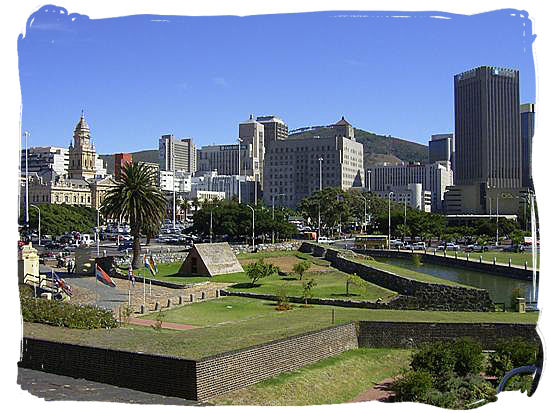 View from the walls of the Castle of Good Hope towards the Cape Town CBD Colonial History of South Africa - copyright © South-Africa-tours-and-travel.com << Top of Page Second British occupation 1806,... When war broke out in Europe in 1803, Napoleon tried to stop British trade with Europe. Britain had lost its American colonies with their valuable trading opportunities and was forced to look elsewhere to find new markets for trade. The logical choice was the East. This meant trading by sea and the Cape was the ideal place for ships to obtain fresh water and produce. This prompted the second occupation of the Cape by Britain, in January 1806. 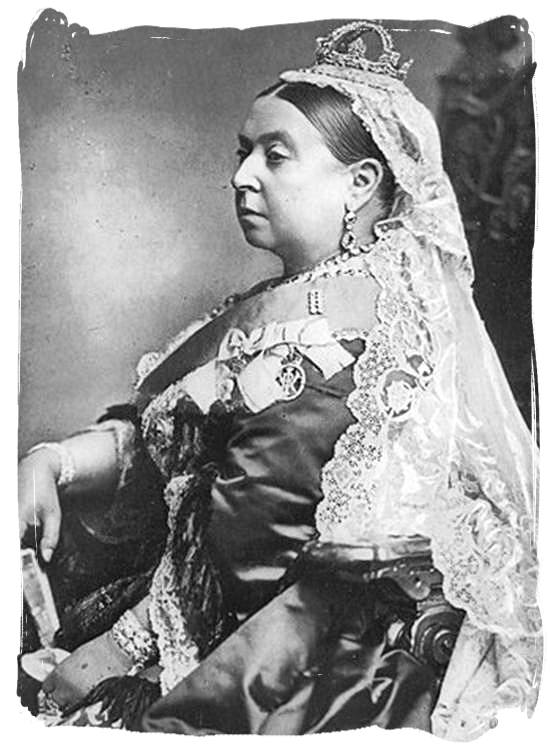 Her majesty queen Victoria who reigned Great Britain and its colonies from 1837 until 1901 Colonial History of South Africa - copyright © South-Africa-tours-and-travel.com Remembering the problems that it had had in its American colonies, Britain decided to be more autocratic in its governance of the Cape. The Cape would be governed as a crown colony, with a governor appointed by England and inhabitants of the Cape would no longer have any say in political matters. The governor took his instructions only from the Minister of Colonies in London and was given the power to make laws and dismiss officials as he saw fit. However, the system of local government, which enabled magistrates and councils to continue as before, was retained. Top of Page |
|
|
|
|
||

